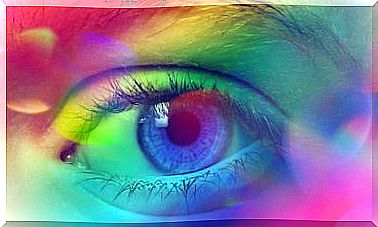Interpreting The Emotions Of Others, A Matter Of Trust

Do we know how to interpret the emotions of others correctly? Every day, we see dozens or even hundreds of facial expressions in other people. These expressions make us react in one way or another depending on how we interpret these expressions.
But do we really interpret each other’s facial expressions correctly? To what extent do we trust our own judgment to trust others? To what extent does our confidence in recognizing the expression of emotion depend on perceptual information or other non-perceptual information?
There is no doubt that this confidence is essential to avoid potentially dangerous situations. However, on many occasions appearances can be deceiving, for better and for worse.
A team from the University of Geneva, in Switzerland, has tested how confident we feel when judging other people’s emotions and which areas of the brain are activated in this process. Their results show that the beliefs of our own emotional interpretation come directly from the experiences stored in our memory, and that this experience sometimes confuses us – the past is not a perfect predictor of the future. The results of the study were published in late December 2018 in the journal Social, Cognitive and Affective Neuroscience.
Interpret the emotions of others
Every day we make dozens, hundreds of decisions. All of them imply a certain degree of trust in someone or something. However, such trust does not always honor the decision made. Sometimes we make mistakes, even when we are totally sure that we have made the right decision. That happens in all aspects of our life.
When it comes to social interactions, we are constantly interpreting the expressions on the faces of those around us. In this sense, being aware of subjectivity is essential when interpreting the emotions of others. In this sense, the researchers were interested in testing the level of confidence we have in our interpretations of the emotional behavior of others and in discovering which areas of the brain are activated during these interpretations.
The scientists decided to measure trust-related behavior, asking 34 participants to judge various faces that displayed a mix of positive and negative emotions. Each face was framed by two horizontal bars of different thicknesses. Some of the faces appeared with clear faces of joy or anger, while others were very ambiguous.

Participants first had to define what emotion was represented on each of the 128 faces. The participants then had to choose which of the two bars was thicker. Finally, for each decision they made, they had to indicate their level of confidence in their choice on a scale from 1 (not very sure) to 6 (true). The bars were used to assess their confidence in visual perception, which in this case served as a control mechanism.
The test results surprised the researchers. According to the researchers, the average level of confidence in emotional recognition was higher than in visual perception, although the participants made more mistakes in emotional recognition than with lines.
In fact, they explain, learning emotional recognition is not as easy as perceptual judgment. Interlocutors may be ironic, lie, or avoid expressing their facial emotions due to social conventions. From this it follows that it is more difficult to correctly calibrate our confidence when recognizing the emotions of other people in the absence of any comment.
Also, we have to interpret an expression very quickly, since it is fleeting. Therefore, we feel that our first impression is correct, and we trust our judgment on an angry face. On the other hand, judging perception is a longer process and is sensitive to direct feedback on its accuracy. If there is doubt, trust is lower than for emotions, because we are aware of our fallibility.
Our memory influences trust
The researchers, using functional magnetic resonance imaging, examined the neural mechanisms during this process of reliance on emotional recognition. They explain that when the participants judged the lines, the perception zones (visual areas) and attention (frontal areas) were activated.
However, when assessing confidence in the recognition of emotions, areas linked to autobiographical and contextual memory, such as the parahippocampal gyrus and the cingulate gyrus , were illuminated.

This shows that the brain systems that store personal and contextual memories are directly involved in beliefs about emotional recognition, and that they determine the accuracy of the interpretation of facial expressions and the confidence placed in this interpretation, according to the researchers.









